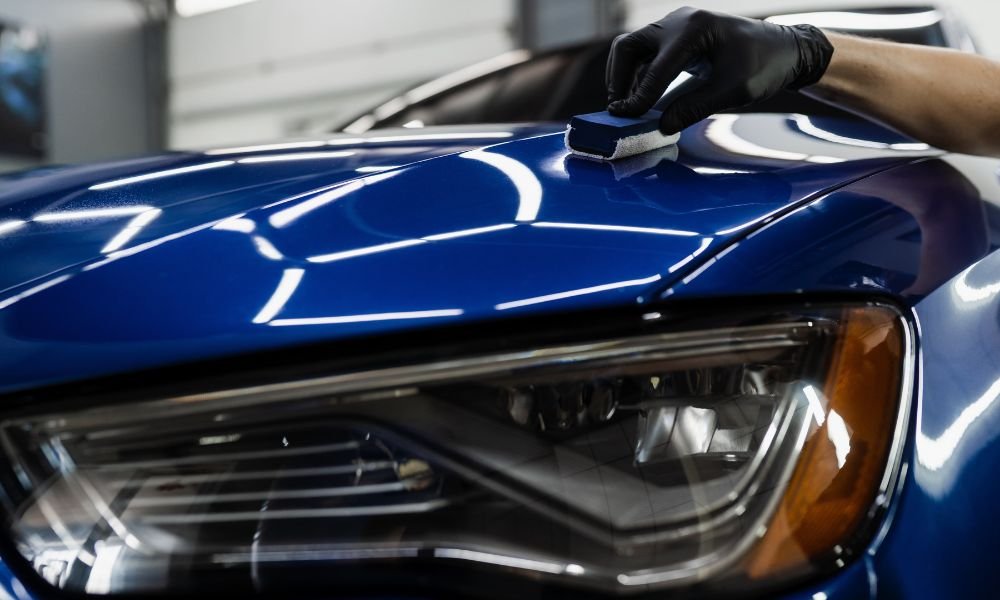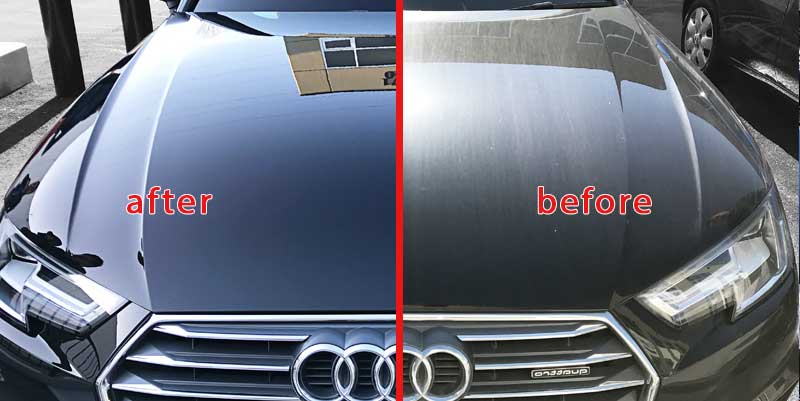Obtain the Best Ceramic Coatings San Jose for Maximum Paint Defense
Obtain the Best Ceramic Coatings San Jose for Maximum Paint Defense
Blog Article
Revealing the Scientific Research Behind Ceramic Coatings: Just How Does It Work and Why Is It Superior to Traditional Options?
Ceramic layers have been gaining appeal in numerous industries for their exceptional performance and toughness. The science behind these finishes surpasses mere surface area protection, diving into the intricate chemistry that makes them attract attention from typical alternatives (ceramic coatings san jose). Understanding how ceramic coatings job and why they outmatch traditional options is crucial for those seeking to improve the long life and resilience of their materials. So, what precisely sets ceramic coatings apart, and how do they achieve such remarkable outcomes?
The Chemistry of Ceramic Coatings
In comprehending ceramic finishes, diving right into the elaborate chemistry behind their composition is vital for grasping their capability and durability. Ceramic finishings are primarily composed of silicon dioxide (SiO2), which forms a solid and protective layer when related to numerous surfaces. This chemical structure provides exceptional resistance to warm, chemicals, and rust, making ceramic coatings extremely looked for after for a large range of applications.
The chemistry behind ceramic layers includes the formation of covalent bonds in between silicon and oxygen atoms, developing an inflexible network that improves the covering's durability and longevity. Additionally, the presence of various other elements such as titanium, aluminum, and zirconium further boosts the finish's residential or commercial properties, offering enhanced hardness and attachment to surface areas.
Comprehending the chemical structure of ceramic finishings allows for the personalization of solutions to match certain needs, whether it be for automobile, commercial, or household objectives. By utilizing the power of chemistry, ceramic coverings remain to lead the way for premium defense and performance in different markets.
Benefits of Ceramic Coatings

An additional significant benefit of ceramic coverings is their hydrophobic nature. This building causes water to bead up and roll off the covered surface area, bring dirt and contaminants with it. Because of this, ceramic coverings make cleaning and keeping surface areas much less complicated and less taxing. Ceramic coatings supply enhanced gloss and tint deepness, giving surfaces a glossy and vivid appearance. On the whole, the wide variety of benefits supplied by ceramic coatings make them a premium choice contrasted to standard finish methods.
How Ceramic Coatings Bond
Ceramic finishes bond to surfaces with a procedure that involves molecular attachment and chemical communications. When a ceramic finishing is used to a surface, it develops a strong bond by chemically adhering to the surface at a molecular level.
Furthermore, the chemical interactions in between the visit ceramic finish and the surface area additionally enhance the bond. ceramic coatings san jose. These communications enable the ceramic covering to create a continual and seamless layer on the surface area, providing outstanding defense and durability. Unlike typical finishes that may remain on the surface without completely bonding, ceramic finishings develop an irreversible bond that is resistant to chemicals, UV rays, and harsh ecological conditions

Essentially, the bonding device of ceramic coverings ensures a effective and lasting safety layer that outshines traditional coating options. This exceptional bond adds to the sturdiness, scratch resistance, and longevity of ceramic coatings, making them a favored choice for different applications.
Toughness of Ceramic Coatings
The remarkable durability of ceramic layers comes from their durable molecular bond and chemical interactions with surfaces, making sure a sturdy safety layer that exceeds traditional layer choices. When applied, ceramic layers develop a strong bond with the substratum, producing a resistant obstacle against different environmental stressors such as UV radiation, chemicals, and abrasions. This bond is so secure that it can endure the roughness of daily usage without degrading or degrading promptly.
Unlike traditional coverings that may degrade over time, ceramic layers keep their stability for an extended period, supplying durable defense for the underlying surface area. In general, the outstanding resilience of ceramic coverings makes them a remarkable choice for safeguarding a vast read what he said array of surfaces in different applications.
Ceramic Coatings Vs. Typical Choices
In contrast to traditional covering techniques, ceramic coverings provide a distinct mix of longevity and protective capacities that establish them apart in numerous surface area defense applications. Standard choices such as wax or sealants give a short-lived layer of protection that can diminish promptly, calling for frequent reapplication. On the various other hand, ceramic finishes create a solid bond with the surface, producing a semi-permanent or irreversible barrier that is extremely resistant to abrasion, chemicals, UV rays, and extreme temperature levels.
Moreover, ceramic coatings offer superior hydrophobic residential properties contrasted to standard finishings. The hydrophobic nature of ceramic finishings causes water to bead up and roll off the surface area, bring dirt and contaminants with it. This self-cleaning result aids to keep the surface's cleanliness and gloss for extended periods, lowering the need for constant upkeep.
Additionally, ceramic finishes have a thicker layer compared to conventional options, giving improved scratch resistance and protection versus minor impacts. This resilience makes sure long-lasting performance and assists preserve the visual charm of the treated surface area for an extensive period.
Verdict
To conclude, the science behind ceramic layers depends on their chemical structure and bonding buildings, making them remarkable to traditional choices. The benefits of ceramic finishings consist of raised toughness and protection for surface areas. By understanding exactly how ceramic layers work and their benefits over conventional alternatives, one can make informed decisions when taking into consideration finishing alternatives for different applications.
Unlike typical finishings that might rest on the surface without completely bonding, ceramic layers produce an irreversible bond that is immune to chemicals, UV rays, and severe ecological problems.
The phenomenal durability of ceramic finishes stems from their durable molecular adhesion and chemical interactions with surfaces, making sure a sturdy protective layer that exceeds standard layer alternatives.Unlike conventional finishes that might degrade over time, ceramic coverings preserve their stability for a prolonged duration, supplying durable protection why not look here for the underlying surface.In contrast to traditional coating techniques, ceramic coverings use an unique blend of longevity and safety capacities that establish them apart in various surface area defense applications. By recognizing just how ceramic finishes job and their advantages over standard choices, one can make educated decisions when considering layer alternatives for numerous applications.
Report this page